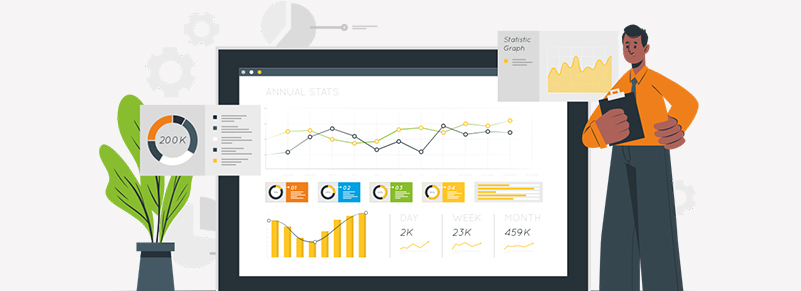
Your website gets a lot of traffic. But the conversion rate statistics are not as impressive as the traffic your website gets. The problem sounds quite familiar, right? Every day an internet user visits millions of web pages but doesn’t spend more than a few seconds on the majority of them. They land on a page, skim it briefly, and move on.
There is no better way of reducing the bounce rate of a website than to improve its UX. In simple language, Bounce Rate is the parameter to measure the percentage of website visitors who leave the site after visiting the first page. A high bounce rate can essentially mean two things, the customer may not find what they are looking for on the website and fails to engage users.
You can track the bounce rate for any of your pages using services like Google Analytics.
The website’s UX means the way your website looks to its users. users interact with your website. It represents the overall look, feel, and usability of your site. It involves every element that contributes to shaping a customer’s experience. A good UX makes it easy for customers to read the content, navigate through the site, find what they are interested in, and fulfill the desired tasks.
Here are a few tips with which you can improve the bounce rate with the help of UX Design:
Keep the Website Simple
Easy navigation is what allows your customers to explore other sections of your site. You can keep your website simple and user-friendly so the users can effectively navigate what they are looking for on the website. The golden rule is that “the customer should be able to find what they are looking for within 3 clicks”. Do not clutter your page with navigation menus and don’t change them from page to page.
Be Consistent with the Website Design
Your website should display consistency when it comes to fonts, colors, spacing, and button sizes throughout its pages. Avoid the use of multiple fonts and color schemes. It looks unprofessional and confuses the user.
Keep your website simple yet visually appealing. Use font and font size that is easy for online reading. Use colors that don’t irritate customers. Consistency is required for visual elements.
Reduce the “Loading” Speed
Websites that load fast have an instant positive impact on customer experience and make a good first impression. Slow-loading websites tend to have a high bounce rate. 40% of users leave a page if it takes more than 3 seconds to load.
So much can be done to improve your website loading speed like compressing images, setting up a content delivery network, enabling browser caching, minimizing the server response time, etc. You can also get your content to load before images so that visitors have something to read.
Write Compelling CTA’s
Ultimately, your customers are expected to perform some action while they are on the site. If you are running an eCommerce store, they want to shop. If you are running a site for a restaurant or a hospital, people want to book a table or an appointment. Make these things easy with a strong and obvious call to action. An intuitive Call To Action that can improve the conversion rate of the customer so much better than any other technique.
Use of bold colors and buttons that draw your customer’s attention, Use of clear language that lets them know that you are there to help.
Every page should start with that aforementioned call to action and end with another type of call to action if the subject matter on that page differs.
Make the Website friendly for every Device
The number of people accessing the internet through their smartphones is rising. Almost every appointment booking, shopping, and surfing the internet is done on smartphones. Hence, it is important to make sure your site looks good on a variety of devices and shapes itself to fit the device. Your layout should be clear on tablets and smartphones and CTAs should be as clear as possible. For sites that are reading or text-based, make sure they are easy to read and text blocks are optimized.
Your website is representative of your business. It is your most powerful asset and makes up for the first impression of your enterprise. Effective website UX is mandatory not only to improve the overall user experience and provide them value but to retain your customers too. Do everything that makes your website more user-friendly, contemporary, and relevant.